May 22, 2025 | 03:01 GMT +7
May 22, 2025 | 03:01 GMT +7
Hotline: 0913.378.918
May 22, 2025 | 03:01 GMT +7
Hotline: 0913.378.918
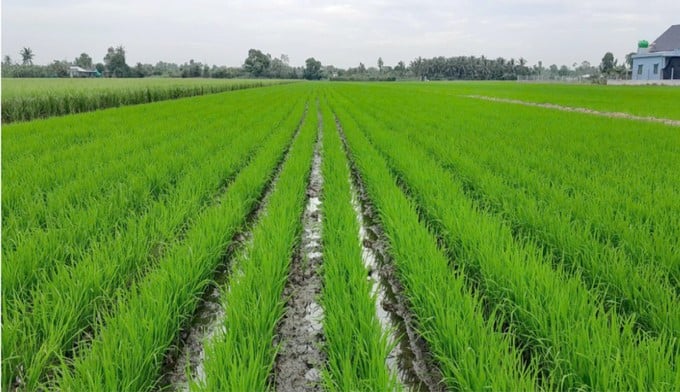
A pilot field of emission-reducing rice farming. Photo: Son Trang.
The Ministry of Agriculture and Environment has just coordinated with the Vietnam Rice Sector Association (VIETRISA) to organize the workshop "Solutions to promote linkage in implementing the Project on sustainable development of 1 million hectares specializing in high-quality, low-emission rice cultivation associated with green growth in the Mekong Delta to 2030" (referred to as the 1 million hectares project).
At the workshop, Mr. Le Van Thiet, Deputy Director of the Crop Production and Plant Protection Department, said that implementing the policy of early sowing to avoid salinity in the winter-spring crop of 2024-2025 in the Mekong Delta, farmers focused on sowing from October 2024. Therefore, the winter-spring crop of 2024-2025 was harvested earlier than the previous winter-spring crop. Specifically, by March 4, the Mekong Delta provinces harvested approximately 608,000 hectares, nearly 33,000 hectares higher than the winter-spring crop of 2023-2024. It is expected that until the end of March, the harvest of the 2024-2025 winter-spring crop will be basically completed.
According to calculations by the Department of Crop Production (old), in January and February 2025, the amount of rice for export was more than 1.5 million tons. Meanwhile, by the end of February, the amount of rice exported only reached 1.1 million tons.
Vietnam's rice export price in the first 2 months of this year is reducing quite a lot. If the average rice export price in 2024 is 627 USD/ton, it is only 533.6 USD/ton in the first 2 months of this year.
Facing that situation, the Crop Production and Plant Protection Department has raised a number of specific solutions for stable and sustainable development of the rice industry in the coming time. In particular, it is necessary to continue focusing on directing to effectively implement the Project on "Sustainable development of 1 million hectares of high-quality, low-emission rice associated with green growth in the Mekong Delta to 2030," especially directing to promote the expansion of the emission-reducing rice farming model to reduce costs for farmers.
Regarding emission-reducing rice farming models to reduce costs for farmers, Dr. Tran Minh Hai, Vice Chairman of VIETRISA, said that since 2024, the Association and partners have implemented seven pilot models of emission-reducing rice farming in the Mekong Delta. Including 43.1 hectares of Tien Thuan Cooperative in Vinh Thanh district, Can Tho city; 43.1 hectares of Thang Loi Cooperative in Thap Muoi district, Dong Thap; 50 hectares of Phuoc Hao Cooperative in Chau Thanh district, Tra Vinh; 48.4 hectares of Phat Tai Cooperative in Chau Thanh district, Tra Vinh; 50 hectares of Hung Loi Cooperative in Long Phu district, Soc Trang; 43.1 hectares of Phu Hoa Youth Agricultural Service Cooperative in Tan Hiep district, Kien Giang; and 10.8 hectares of Thanh An Shrimp-Crab-Rice Cooperative in An Minh district, Kien Giang. The models all apply mechanization in sowing and implement straw collection to produce mushrooms or fertilizer.
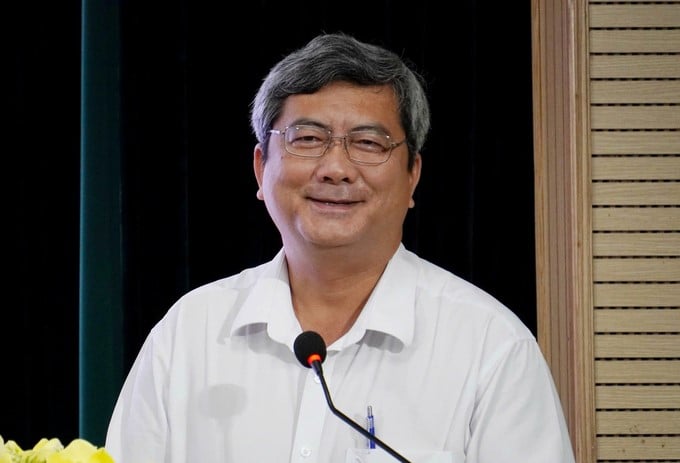
Dr. Tran Minh Hai shared at the workshop. Photo: Son Trang.
Dr. Tran Minh Hai assessed that the actual implementation of seven pilot models showed that some issues considered difficult to implement were all solved. To be more specific, for a long time, in rice production in the Mekong Delta, the most difficult problem is to change farmers' awareness in reducing the amount of rice seed. But the models have solved this problem with the amount of rice seed decreasing by 30-80 kg/ha.
Thanks to the sharp decrease in the amount of seeds, the number of pesticide spraying times also decreased strongly, from 1–4 times. The amount of fertilizer also reduced, while the productivity in most models is higher than that of conventional rice fields. As a result, farmers' profit increased by 5.6–17.6 million VND/ha (depending on the type of seed).
Another problem is the solution of alternate wetting and drying (AWD) irrigation to reduce emissions in rice cultivation. With the cooperation of the International Rice Research Institute (IRRI) and some other organizations, all seven models have implemented alternate wetting and drying irrigation at least once per crop without affecting the growth of rice plants. In addition, IRRI and other organizations have also successfully measured the amount of CO2 gas reduced in the models.
The general results show that compared to the fields with common methods of production, the pilot models of emission-reducing rice cultivation helped reduce the amount of seed by 50%; fertilizer decreased by 30%; pesticide decreased by 30%; and falling and post-harvest losses reduced by 5%. On average, the profit increases by 5 million VND/ha/crop or more. In particular, in addition to the economic efficiency, the pilot models also reduce the average emissions by 5 tons of CO2/ha/crop.
"It is worth noting that in the Mekong Delta, there are currently not only seven pilot models as above, but many Mekong Delta provinces have also relied on these models to actively deploy the areas of emission-reducing rice in the area that are giving good results," Dr. Tran Minh Hai shared.
Translated by Thu Huyen
![Reducing emissions from rice fields: [2] Farmers’ commitment to the soil](https://t.ex-cdn.com/nongnghiepmoitruong.vn/608w/files/news/2025/05/05/dsc08881jpg-nongnghiep-140632.jpg)
(VAN) Clean rice cultivation model in Thuong Tan commune, Bac Tan Uyen district, is assisting local residents in achieving sustainable agriculture by substantially reducing costs, increasing productivity, and protecting the environment.
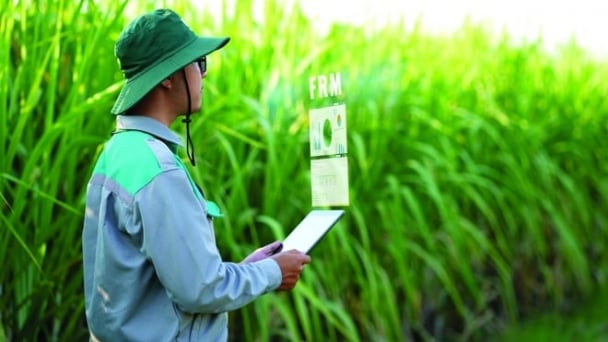
(VAN) At the conference to disseminate Resolution No. 68, AgriS introduced its digital agricultural ecosystem and reaffirmed its commitment to accompanying the Government in promoting private sector development and sustainable agriculture.
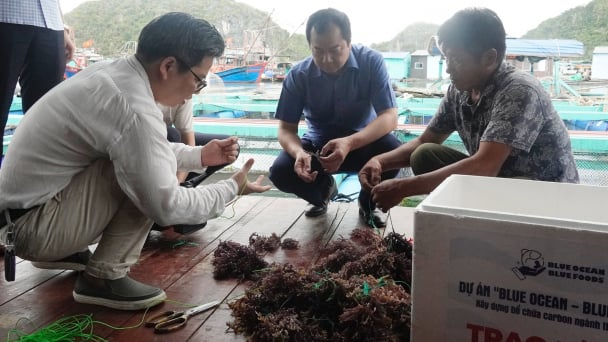
(VAN) 'Blue Ocean - Blue Foods' initiative is designed to restore marine ecosystems and establish sustainable livelihoods for local communities by cultivating a minimum of 1,000 hectares of cottonii seaweed in the first three years.
/2025/05/21/4642-3-112707_603.jpg)
(VAN) The V-SCOPE project has made direct contributions to three out of six pillars of the Comprehensive Strategic Partnership between Vietnam and Australia.
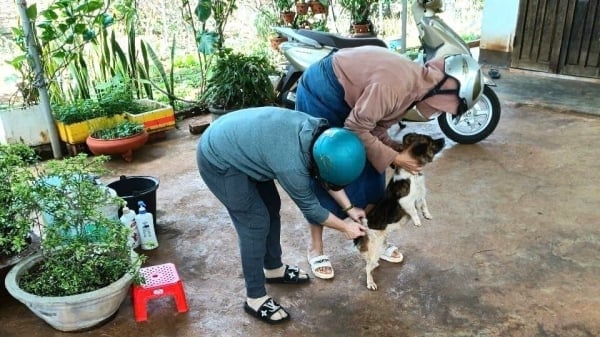
(VAN) Facing the threat of rabies spreading to the community, Gia Lai province urgently carries out measures to vaccinate dogs and cats on a large scale.
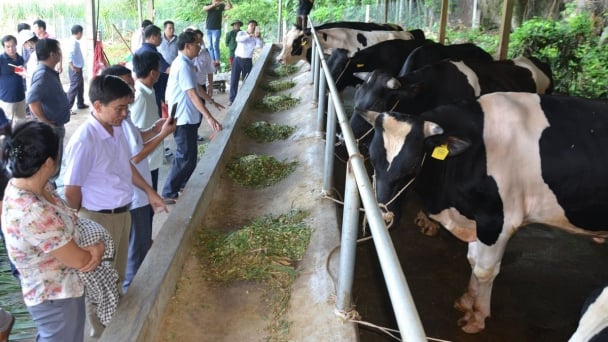
(VAN) Disease-free livestock farming not only protects livestock herds but also stabilizes production and livelihoods for many farmers in Tuyen Quang.
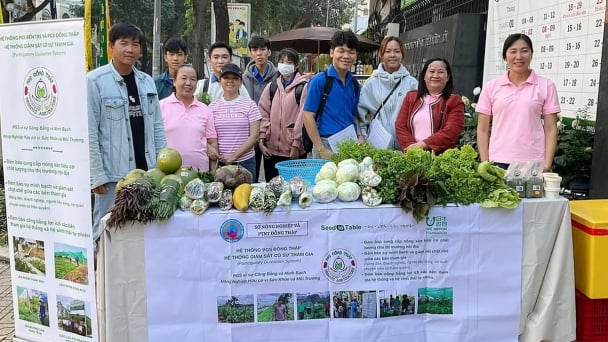
(VAN) Japan's grant aid project contributes to capacity building, promoting organic agricultural production, and fostering sustainable community development in Dong Thap province.